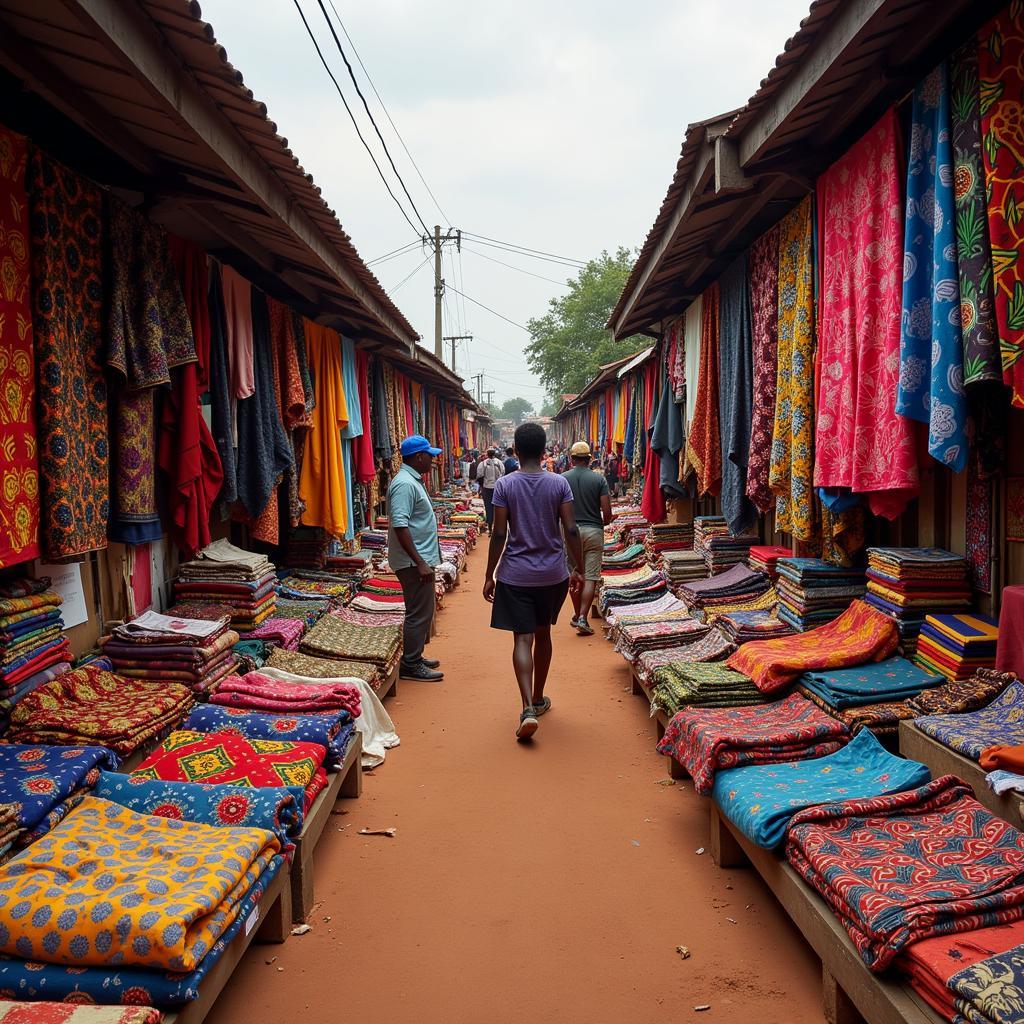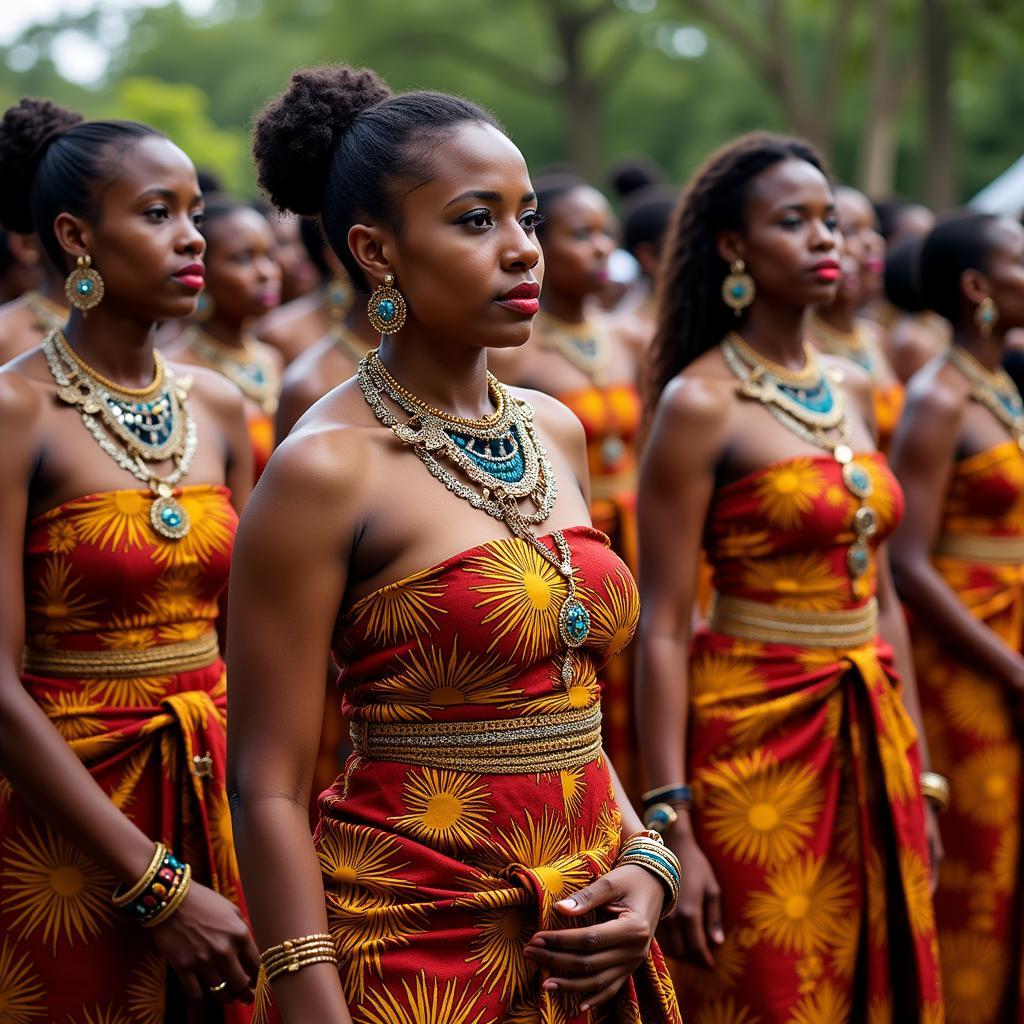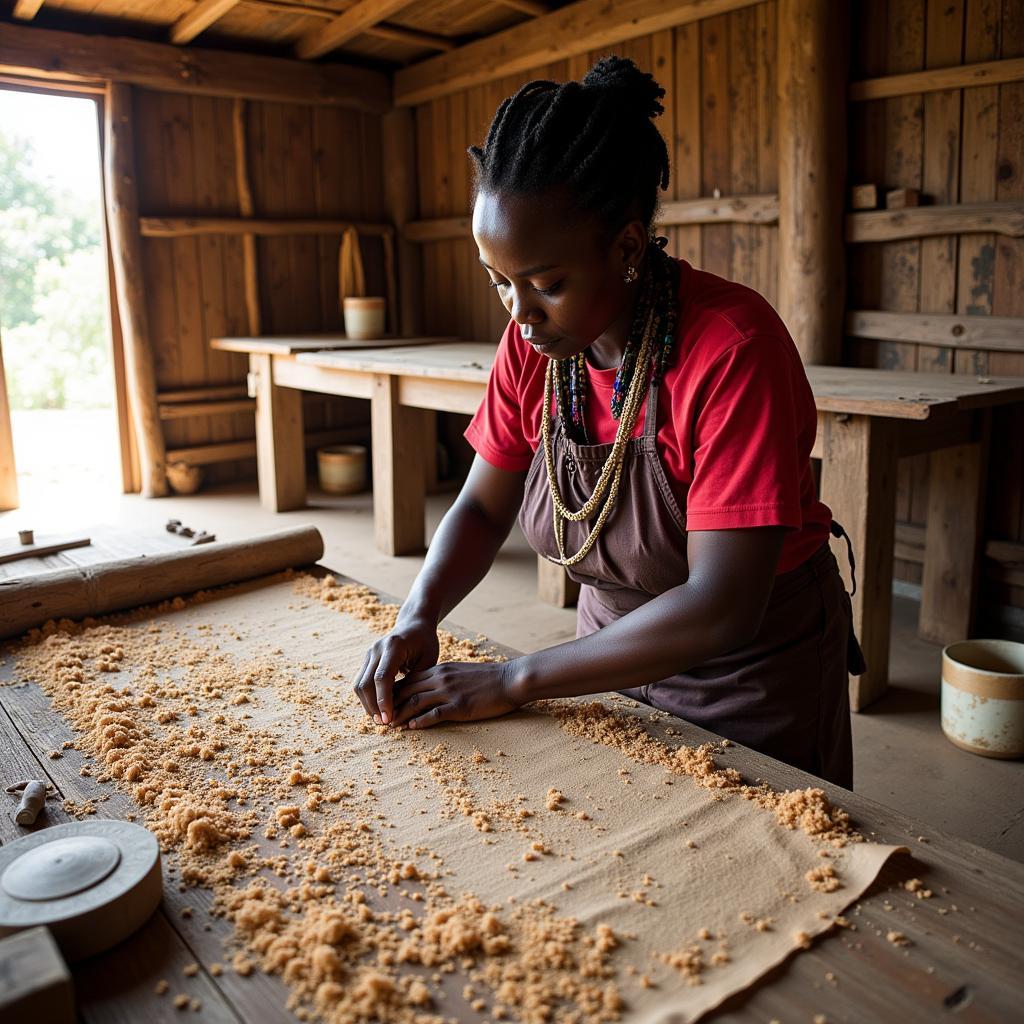African Cloth Designs: A Journey Through Culture and Style
African Cloth Designs are more than just fabrics; they are vibrant tapestries woven with history, tradition, and artistry. From the intricate patterns of Kente cloth to the bold motifs of Ankara, each design tells a story, reflecting the diverse cultures and heritage of the African continent.
 Colorful African fabrics in a bustling market
Colorful African fabrics in a bustling market
The Language of Symbols and Colors
For centuries, African communities have used cloth designs as a form of visual communication. Symbols and colors hold deep cultural significance, conveying messages about social status, family lineage, historical events, and spiritual beliefs. For instance, the Adinkra symbols of Ghana, often found on Kente cloth, represent proverbs, philosophical concepts, and aspects of daily life. Each symbol carries a unique meaning, adding another layer of depth and narrative to the fabric.
Similarly, colors in African cloth designs often hold symbolic meanings. Gold, frequently associated with royalty and wealth, features prominently in many traditional garments. Red can signify strength, power, or even spiritual energy, while green often represents fertility and abundance.
“Understanding the symbolism within African cloth designs is like unlocking a secret language,” explains Dr. Abena Agyeman, a textile historian specializing in West African cultures. “These symbols and colors are not merely decorative; they are a powerful form of nonverbal communication, expressing identity, beliefs, and values passed down through generations.”
A Diversity of Styles Across the Continent
From North Africa’s flowing djellabas adorned with intricate embroidery to the vibrant kanga cloths of East Africa, each region boasts its own unique textile traditions and design aesthetics.
West Africa: A Tapestry of Weaving Traditions
West Africa stands out for its rich weaving heritage, particularly in countries like Ghana, Nigeria, and Ivory Coast. Kente cloth, originating from Ghana, is perhaps one of the most recognizable African fabrics worldwide. Woven on narrow strip looms and meticulously sewn together, Kente cloth is renowned for its geometric patterns, vibrant colors, and symbolic motifs.
 Women in vibrant Kente cloth at a traditional ceremony
Women in vibrant Kente cloth at a traditional ceremony
Adire fabric, another West African gem, utilizes resist-dyeing techniques, creating captivating patterns on cotton cloth. Indigo resist dyeing, a prominent technique in Nigeria, produces deep blue hues and intricate designs, often featuring natural elements like leaves, animals, and spirals.
East Africa: The Ubiquitous Kanga Cloth
In East Africa, the kanga cloth reigns supreme. These rectangular pieces of fabric, often sold in pairs, feature bold colors, Swahili proverbs, and striking patterns. Worn by women and men alike, kangas serve multiple purposes, from everyday wear to carrying babies and expressing messages of love, friendship, or even political commentary.
Modern Evolution and Global Influence
Today, African cloth designs are experiencing a renaissance, inspiring contemporary fashion designers, artists, and interior decorators worldwide. From high-fashion runways to home decor accents, these vibrant textiles are adding a touch of African flair and cultural richness to a global audience.
Conclusion
African cloth designs are a testament to the continent’s rich cultural heritage and artistic ingenuity. More than just fabrics, they are visual narratives, woven with symbolism, history, and tradition. As these designs continue to evolve and inspire, they serve as a powerful reminder of the beauty and diversity of African culture.


